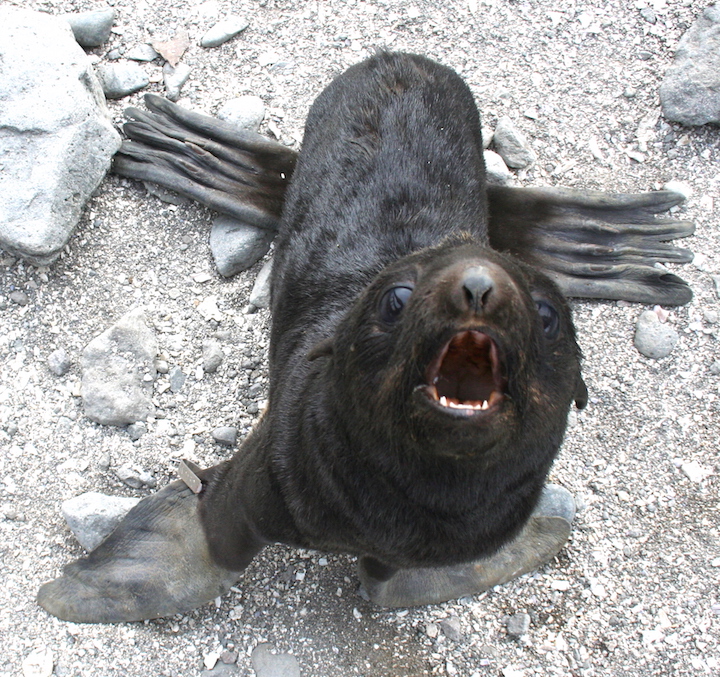The majority of Northern Fur Seals breed on the Pribilof Islands (Alaska, USA) and the Commander Islands in Russia. Marine biologist Olga Belonovich, PhD, shares this report about Northern Fur Seals breeding on the Commander Islands.
About 20% of the world northern fur seal population breeds on the Commander Islands, Russia. The Commander Islands are located at the western edge of the Aleutian Islands. There are 4 northern fur seal rookeries (dense breeding grounds) on the Commander Islands, two on Bering and two on Medny Island. Most of these fur seals spend their winter in a central Pacific and off the eastern coast of Japan, but they return to the islands to breed each year.
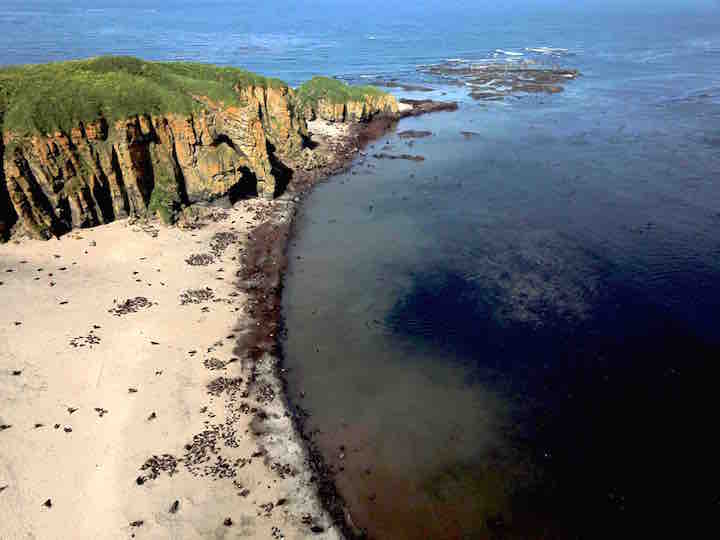
Northern Fur Seal Rookery on the Commander Islands
Males arrive at the rookeries first, and some of them even spend the winter on the Commander Islands. In May, bulls “divide” the rookery territory and protect their portion of the beach from intruders. Each northern fur seal male usually has several females in his harem. Females start to arrive on the Commander Islands rookeries in the middle of June and reach maximum numbers in the middle July. A few days after arrival, the females give birth to a single pup that is nursed for 3-4 months. Females only nurse their own pup.
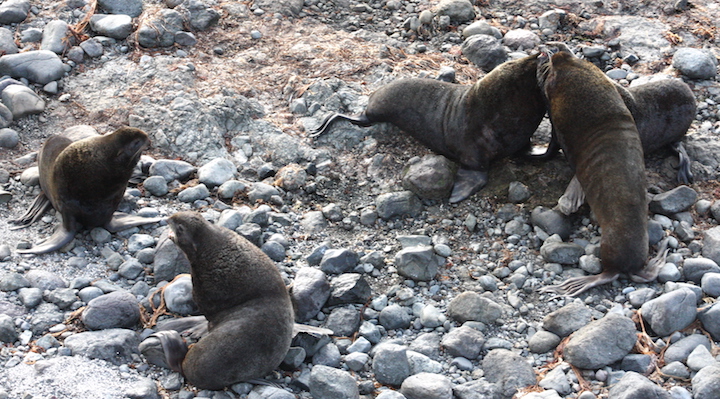
Male fur seals fighting on the beach
Soon after giving birth the female become pregnant again. Now she needs to nurse her pup, feed herself and support the new embryo. All this takes a lot of energy, and that is why food availability near rookeries is a key factor for northern fur seal survival. Fur seal females feed on fish and squid. Some females travel up to the Kamchatka coast to forage, while others stay in water near Commander Islands.
Pups congregate on the beach in “kindergartens” where they play with each while their mothers spend a few days out at sea feeding. When the female comes back to shore, she calls her pup and recognizes her pup by its’ voice. The females stay on shore with the pups for a few days before going back out for the next foraging trip.
Scientists monitor the northern fur seal population number on the Commander Islands by counting seals every year. Males usually get counted every 5 days during June-August, and females are counted everyday between July 10 and July 20 (when the maximum numbers are on the rookery). At the beginning of August scientists then count number of northern fur seal pups on the rookeries. Traditionally, all adult animals on the rookery were driven away to the water, while pups stay on the beach and scientists count them. In some years, the number of pups were mathematically calculated based on the number of females, and lately, drones have been used to take pictures of the rookery and count pups on the picture.
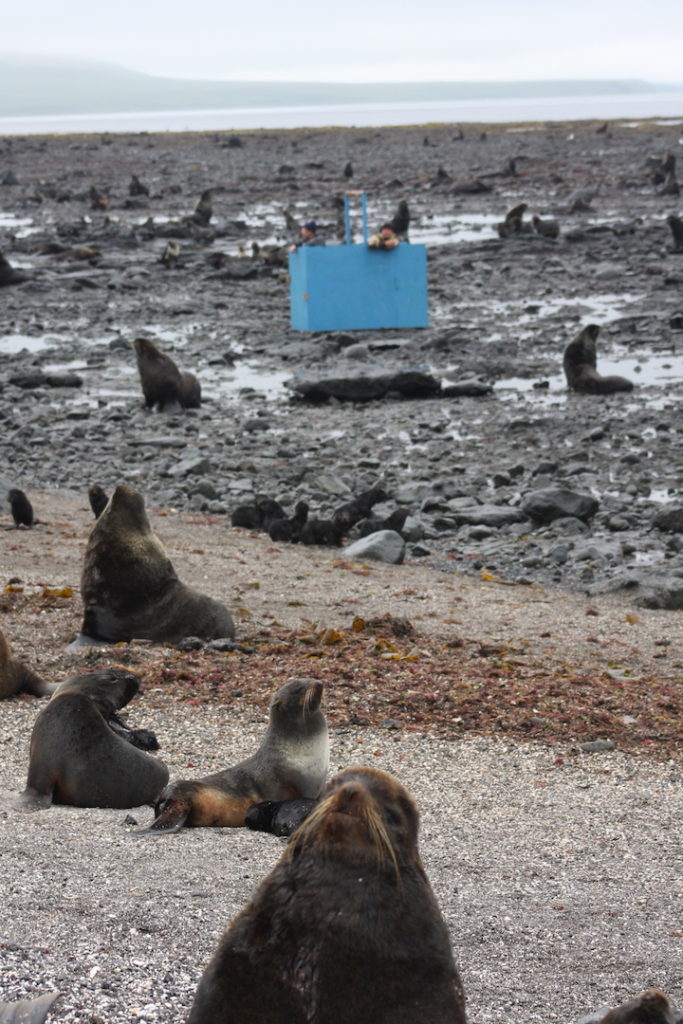
Scientists study fur seals from the safety of a box that can be moved around the rookery
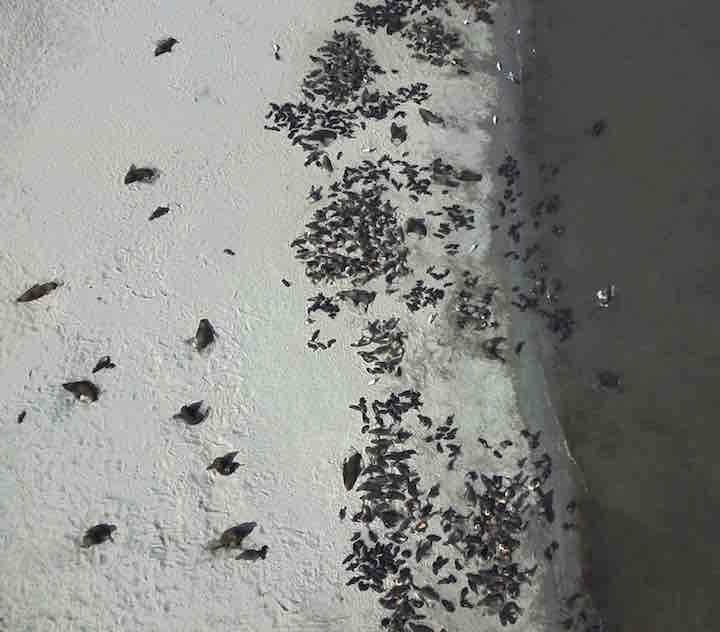
Aerial view of a fur-seal rookery
Maine debris can be very dangerous, and animals can die when they get debris around their neck. Scientists, locals and volunteers try to catch these seals and remove the marine debris. It is important to continue northern fur seal population monitoring on the Commander Islands.
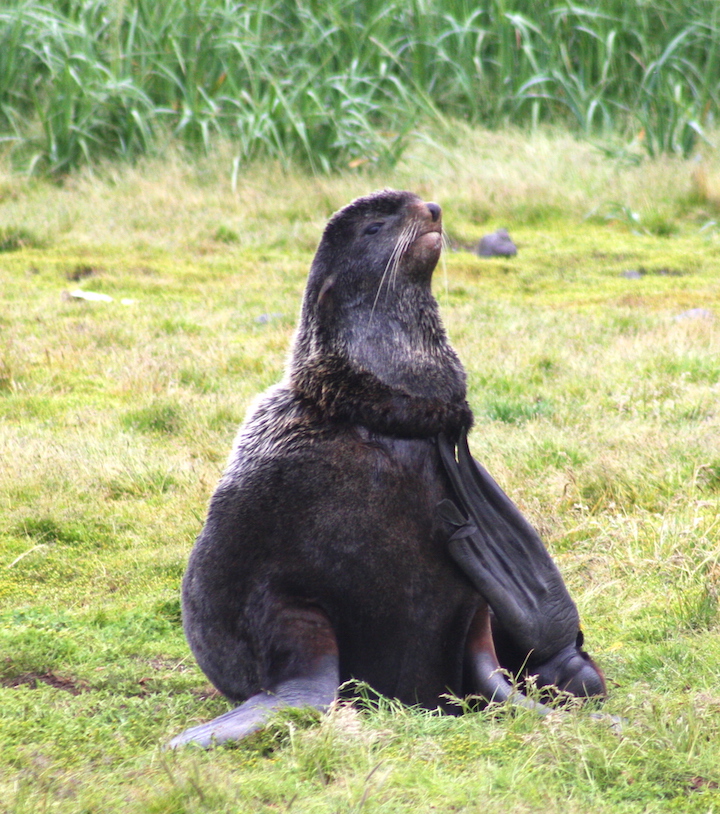
Northern fur seal tangled in marine debris

